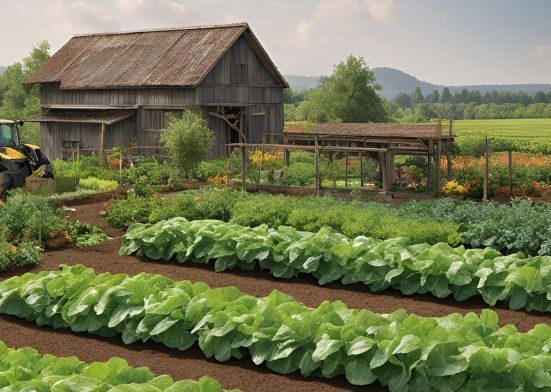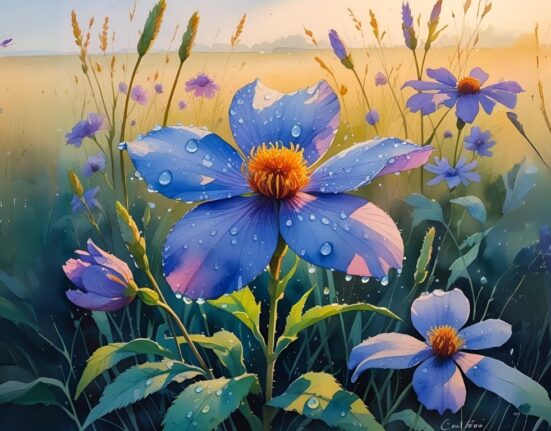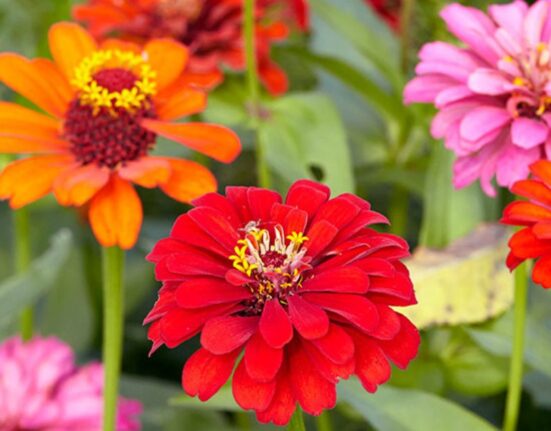Zinnias are synonymous with vibrant, cheerful blooms that light up gardens with their kaleidoscope of colours. While many gardeners are familiar with annual zinnias, which burst into bloom for a single season, perennial zinnias offer the same dazzling display with the added benefit of returning year after year. These hardy, low-maintenance plants are a dream for gardeners looking to create sustainable, pollinator-friendly landscapes. In this comprehensive guide, we’ll delve into the world of zinnia perennials, examining their characteristics, care requirements, varieties, and how to incorporate them into your garden for a stunning display that lasts all season long.
What Are Zinnia Perennials?
Zinnias belong to the Asteraceae family, which includes daisies, sunflowers, and asters. While most zinnias are grown as annuals, completing their life cycle in one growing season, a few species are true perennials, meaning they survive winter dormancy and regrow each spring in suitable climates. The most notable perennial zinnia species are Zinnia grandiflora (prairie zinnia) and Zinnia acerosa (desert zinnia). are zinnias annuals or perennials These plants are indigenous to northern Mexico and the southwestern United States. where they thrive in arid, sunny environments.
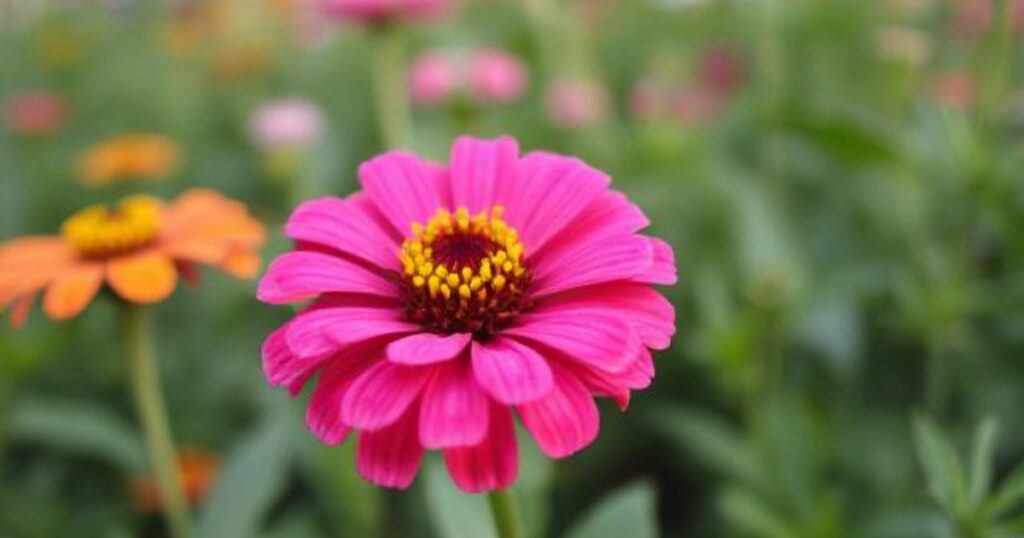
Unlike their annual cousins, which can grow up to 4 feet tall with large, flamboyant blooms, perennial zinnias are more compact, typically reaching heights of 6 to 18 inches. Lilac Flower Their flowers are smaller but no less vibrant, appearing in shades of yellow, white, pink, red, orange, and even bi-colours. These blooms are daisy-like, with a central disc surrounded by bright petals, and they attract a host of pollinators, including butterflies, bees, and hummingbirds.Perennial zinnias are hardy in USDA zones 4-10, depending on the species, making them ideal for gardeners in warmer, drier regions. Their drought tolerance and low-maintenance nature also make them a favourite for xeriscaping, rock gardens, and sustainable landscaping.
Why Choose Zinnia Perennials?
Perennial zinnias offer several advantages over annual varieties, making them a worthy addition to any garden:
- Longevity: Unlike annuals, which need replanting each year, perennial zinnias return reliably in suitable climates, saving time and money.
- Low Maintenance: Once established, these plants require little maintenance, flourishing in unfavorable soils and requiring little water.
- Drought Tolerance: Their native habitats in arid regions make them perfect for water-wise gardens.
- Pollinator-Friendly: Zinnias are a magnet for pollinators, supporting local ecosystems and enhancing biodiversity.
- Versatility: Compact and colourful, they fit seamlessly into borders, rock gardens, containers, or mass plantings.
- Extended Bloom Time: Perennial zinnias bloom from late spring through fall, providing months of colour.
How to Grow Zinnias Like Perennials
Although zinnias are technically annuals, with the proper care and strategy, you can enjoy their vibrant blooms year after year—almost like perennials. Here’s how:
Encourage Self-Seeding
Let some flowers fully mature and go to seed at the end of the season. zenias drop seeds naturally, and in warm climates, these can sprout the following spring without extra effort. Leave the spent blooms in place until they dry out.
Collect and Save Seeds
For greater control, collect dry seeds from healthy, Are Sunflowers Perennials flowering plants.Over the winter, keep them somewhere dry and cool. Replant in the spring to keep your favourite zinnia colours and varieties returning year after year.
Start Indoors or Direct Sow Early
In colder regions, start Plant seeds insidefour to six weeks before the last frost date that is predicted. Transplant them once the weather warms up. Alternatively, sow seeds directly into the soil after the danger of frost has passed.
Support Healthy Reseeding
Prepare a well-drained garden bed and avoid heavy mulching at the end of the season so dropped seeds can make contact with the soil.
With smart seed-saving and planting techniques, zinnias can return year after year, filling your garden with lasting, colourful joy—just like perennials.
Popular Perennial Zinnia Species
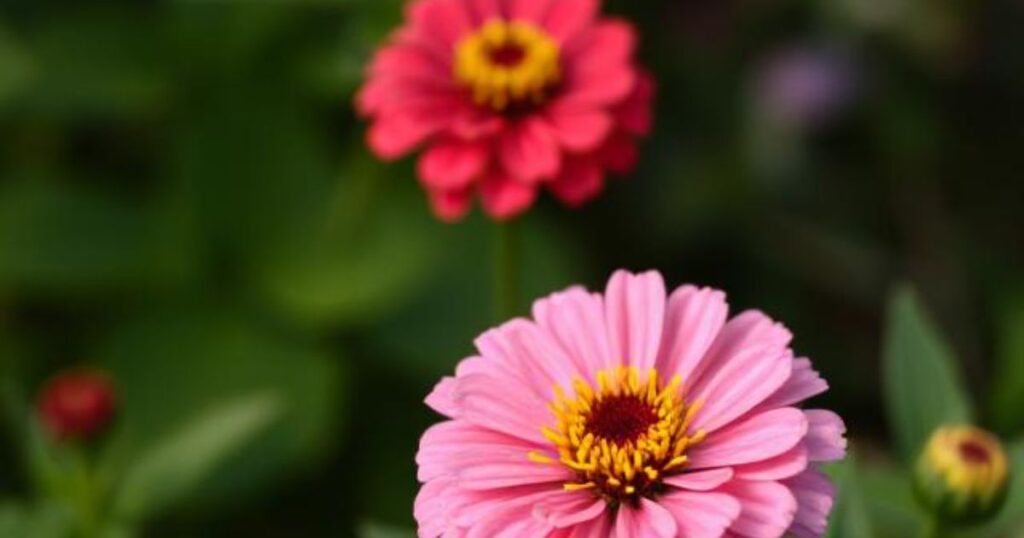
Let’s take a closer look at the two primary perennial zinnia species and their unique traits:
Zinnia Grandiflora (Prairie Zinnia)
- Appearance: This species is characterized by bright yellow, daisy-like flowers with a central brown or red disc. Plants grow 6-12 inches tall and spread up to 15 inches wide, forming a low, mounding habit.
- Hardiness: Hardy in USDA zones 4-9, it’s one of the most cold-tolerant zinnia perennials.
- Habitat: Native to the southwestern U.S. and northern Mexico, it thrives in dry, rocky soils and full sun.
- Uses: Ideal for xeriscaping, rock gardens, or as a groundcover. Its spreading habit makes it great for filling gaps in borders.
- Care Tips: Minimal watering is required once the plant is established. Deadheading encourages more blooms, though it will self-seed in favourable conditions.
Zinnia Acerosa (Desert Zinnia)
- Appearance: Desert zinnia produces small, white to pale yellow flowers with yellow centres. Plants are compact, growing 4-10 inches tall and wide, with needle-like, grey-green foliage.
- Hardiness: Hardy in USDA zones 5-10, it’s well-suited to hot, arid climates.
- Habitat: Found in the southwestern United States’ arid regions States and Mexico, it thrives in sandy or gravelly soils.
- Uses: Perfect for rock gardens, container plantings, or as an accent in desert landscapes.
- Care Tips: Extremely drought-tolerant, it requires excellent drainage to prevent root rot. Avoid overwatering.
Both species are tough and resilient, adding a pop of colour to challenging environments where other plants might struggle.
Growing Zinnia Perennials: Care and Maintenance
Perennial zinnias are remarkably easy to grow, making them appropriate for gardeners of all skill levels. Here’s a step-by-step guide to ensure your zinnias thrive:
Choosing the Right Location
Zinnias are sun-worshippers, requiring at least 6-8 hours of direct sunlight daily. Pick a location with soil and lots of sunlight. that drains properly. These plants tolerate poor, rocky, Top 10 Proven Weed Management or sandy soils but will struggle in heavy clay or waterlogged conditions. Consider modifying your soil if it tends to hold water. amending it with sand or gravel or planting in raised beds.
Planting Zinnia Perennials
- When to Plant: Plant in spring after the last frost date in your area, allowing roots time to establish before winter. In warmer climates (zones 8-10), fall planting is also a viable option.
- Planting Instructions: Dig a hole twice the root ball’s width and depth. Plants ought to be 12 to 18 inches apart in order to facilitate spreading. After planting, fill the hole with dirt and give it a little water.
- Starting from Seed: While less common, you can grow perennial creeping zinnia sanvitalia from seed. Plant seeds straight into the gardenduring the spring. and lightly cover with soil. Maintain the soil’s moisture content until germination, which usually happens 7-14 days.
Watering
Perennial zinnias are drought-tolerant once established, but they need watering frequently throughout their first growing season in order to establish robust roots. Water sparingly yet deeply, letting the soil dry out in between waterings.Root rot can result from overwatering, especially in soils with poor drainage. In most climates, natural rainfall is sufficient for established plants, except during prolonged periods of drought.
FertilizingFertilizing
These plants thrive in lean soils and rarely need supplemental fertilizer fertilizer. If your soil is impoverished, apply a balanced, slow-release fertilizer fertilizer (e.g., 10-10-10) in early spring. Turning Trash into Treasure Avoid high-nitrogen fertilizers fertilizers, which can promote excessive leaf growth at the expense of flowers.
Pruning and Deadheading
Deadheading (removing spent flowers) encourages continuous blooming and prevents self-seeding, which can be desirable or not, depending on your garden goals. In late winter or early spring, trim back dead or woody growth to promote a tidy shape and vigorous regrowth. For spreading varieties like Zinnia grandiflora, occasional pruning can control their spread.
Winter Care
In zones where perennial zinnias are hardy, they require little winter preparation. Apply a light layer of mulch (e.g., gravel or bark) around the base to protect roots from extreme cold. In colder zones (below zone 4), treat them as annuals or grow in containers that can be brought indoors during winter.
Pests and Diseases
Perennial zinnias are relatively pest-resistant but can occasionally attract aphids or mites on spiders. Usually, an intense burst of water or insecticidal soap resolves these issues. The primary disease concern is powdery mildew, which appears as white, powdery spots on leaves in humid conditions. To prevent mildew:
creeping zinnia plants should be spaced sufficiently apart to ensure appropriate air circulation.
- Don’t water from above.
- Apply a fungicide if necessary, following label instructions.
Designing with Zinnia Perennials
Perennial zinnias are incredibly versatile, fitting into a variety of garden styles and settings. Here are some ideas to inspire your landscape design:
Xeriscaping and Desert Gardens
Thanks to their drought tolerance, Zinnia grandiflora and Zinnia acerosa are staples in water-wise gardens. Pair them with other desert natives, such as agave, yucca, or penstemon, for a low-maintenance, high-impact display. Their bright blooms contrast beautifully with the silvery foliage of plants like lavender or artemisia.
Pollinator Gardens
Zinnias are a favourite of butterflies, bees, and hummingbirds. Create a pollinator haven by combining them with other nectar-rich perennials, such as coneflower (Echinacea), bee balm (Monarda), or salvia. This not only supports local wildlife but also ensures a lively, colourful garden.
Rock Gardens
The compact size and rugged nature of perennial zinnias make them ideal for rock gardens. Tuck them into crevices between boulders or along gravel paths, where their blooms will soften hard edges. Companions like sedum, thyme, or ornamental grasses enhance the texture and visual interest.
Borders and Edging
Use zinnias as a low border along walkways or garden beds. Their mounding habit creates a neat edge, while their long bloom season keeps the area vibrant. Mix colours for a playful effect, or stick to a single hue for a cohesive look.
Containers and Patios
Perennial zinnias shine in containers, where their compact size and vivid blooms add instant charm to patios, balconies, or courtyards. Select a container with drainage holes and potting mix that drains properly. Use in conjunction with trailing plants such as sweet potato vine or arrangement.
Propagating Zinnia Perennials
You can expand your zinnia collection or share plants with friends through propagation. Here are two standard methods:
- Division: In early spring, dig up mature plants and carefully cut the root ball into smaller pieces. each with roots and shoots. Replant immediately and water well. The division is best done every 2-3 years to rejuvenate plants.
- Seeds: Collect seeds from spent flowers in the Sow them in the spring after storing them in a cold, dry location during the fall. Note that seeds from hybrid cultivars may not produce true-to-type plants.
What is the Difference Between Annuals and Perennials?
In gardening, plants are often categorized as annuals or perennials based on their life cycle. Understanding the difference helps gardeners plan and maintain their gardens more effectively.Annuals are plants that complete their entire life cycle—from germination to flowering to seed production—within a single growing season. Once the season ends, the plant dies. Examples include zinnias, marigolds, and petunias. Gardeners often replant annuals each year, but they reward you with vibrant, continuous blooms throughout the season.
Perennials, on the other hand, live for more than two years. After blooming, the top part of the plant may die back during colder months, but the root system remains alive underground. The plant re-emerges the next season and continues this cycle for several years. Popular perennials include lavender, echinacea, and hostas.Some plants blur the lines. For example, zinnias are technically annuals, but in warmer climates or with seed-saving, they can behave like perennials.In summary, annuals offer short-term colour with quick growth, while perennials provide lasting beauty over time, often requiring less replanting. Combining both in your garden can create a dynamic and colourful landscape year after year.
Common Challenges and Solutions
While perennial zinnias are generally trouble-free, here are some potential issues and how to address them:
- Poor Blooming: Insufficient sunlight or over-fertilization over-fertilization can reduce flowering. Ensure plants receive full sun and avoid excess nitrogen.
- Leggy Growth: Too much shade or rich soil can cause spindly growth. Move plants to a sunnier spot or amend soil to reduce fertility.
- Winter Dieback: In marginal zones, plants may die back in harsh winters. Mulch heavily or grow in containers for overwintering indoors.
Zinnia Perennials in Different Climates
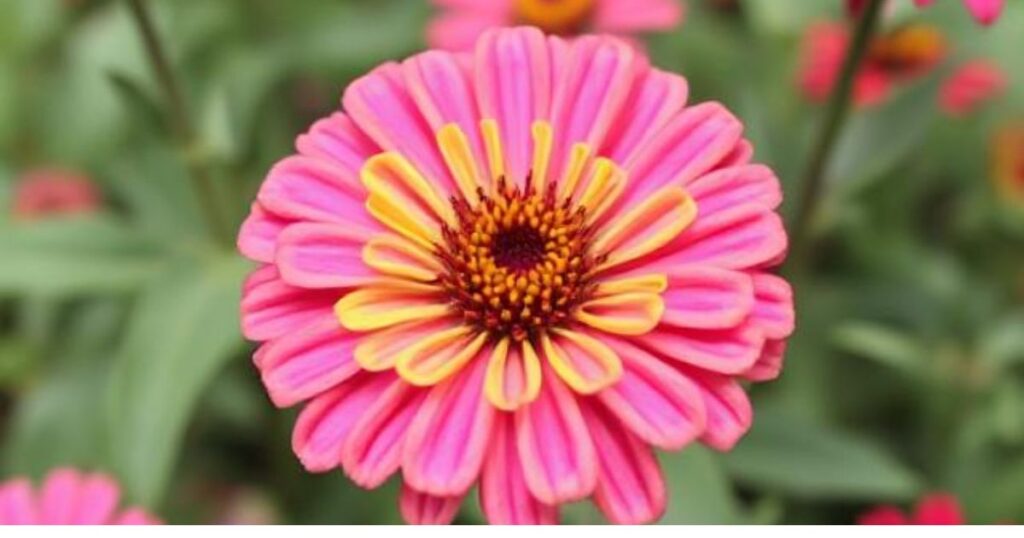
Perennial zinnias perform best in warm, dry climates but can adapt to a range of conditions with proper care:
- Arid Regions (Southwest U.S.): These are the zinnias’ native habitats, where they thrive with minimal intervention. Focus on drainage and avoid overwatering.
- Temperate Zones (Midwest, South): In zones 6-8, zinnias are reliable perennials. Mulch in winter to protect roots from freeze-thaw cycles.
- Humid Climates (Southeast): High humidity can increase the risk of mildew. Choose well-ventilated sites and monitor for fungal issues.
- Cold Climates (Zones 3-4): In colder areas, grow zinnias as annuals or in containers, as they’re unlikely to survive harsh winters.
Where to Find Zinnia Perennials
Perennial zinnias may be less common than annual varieties at big-box garden centres, but you can find them at native plant nurseries, online retailers, or seed catalogues. Look for reputable sources like High Country Gardens, Annie’s Annuals, or Plant Delights Nursery, pictures of a zinnia which specialize in drought-tolerant and native plants. When purchasing, check the hardiness zone and cultivar details to ensure compatibility with your climate.
Conclusion
Zinnia perennials are a gardener’s delight, combining vibrant colour, easy care, and ecological benefits in one compact package. Whether you’re designing a water-wise rock garden, attracting pollinators, or simply seeking a reliable bloomer, Zinnia grandiflora and Zinnia acerosa deliver year after year. Boosting Soil Health: Their ability to thrive in challenging conditions makes them a standout choice for sustainable landscapes, while their cheerful blooms bring joy to any setting.
Ready to add zinnia annual or perennial to your garden? Begin by selecting a sunny spot, preparing well-drained soil, and choosing a species that suits your climate. With minimal effort, you’ll enjoy a colourful display that keeps coming back, season after season. Happy gardening!
FAQ
Are zinnias perennials or annuals?
Zinnias are technically annuals, meaning they complete their life cycle in one season. However, in warmer climates or with proper seed-saving, they can behave like perennials by reseeding themselves naturally.
Can zinnias survive winter?
Zinnias cannot survive frost. In colder climates, the plant dies off completely. But you can collect their seeds in the fall and replant them in the spring to keep them growing year after year.
How can I make Zinnias come back every year?
Let some of the plant’s blossoms dry, and drop their seeds naturally, or collect the seeds yourself to replant. In warmer zones (9–11), zinnias may reseed and regrow on their own.
What is the best time to plant zinnia seeds?
When the earth has warmed up following the last frost, zinnia seeds should be sown. They can also be started inside four to six weeks sooner.
Do zinnias need a lot of care?
Zinnias are low-maintenance. They require well-drained soil, flourish in full light, and benefit from regular deadheading to encourage more blooms.




